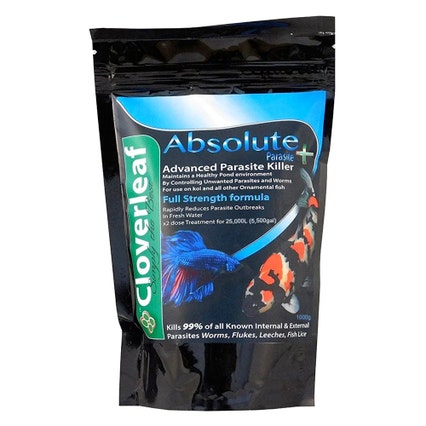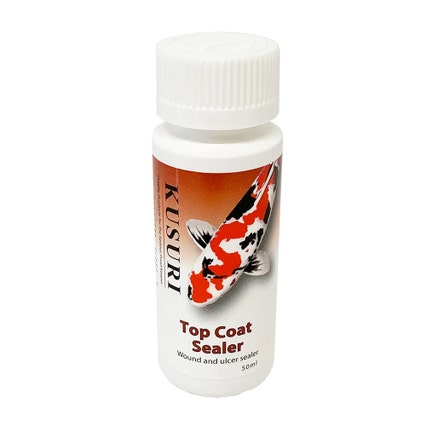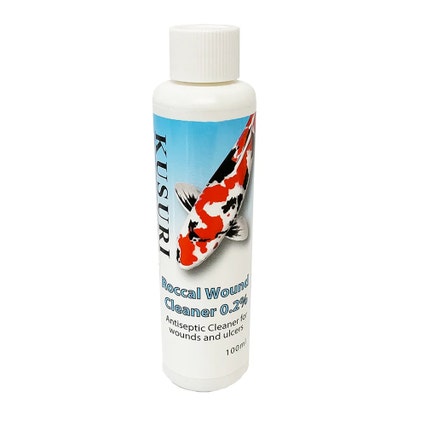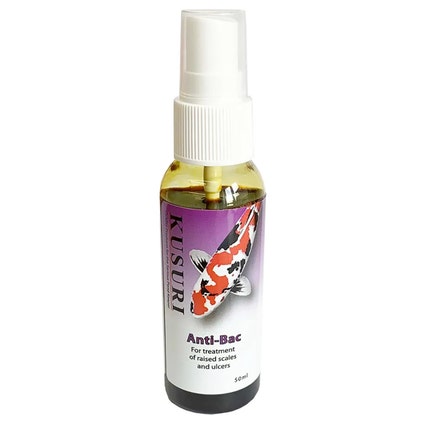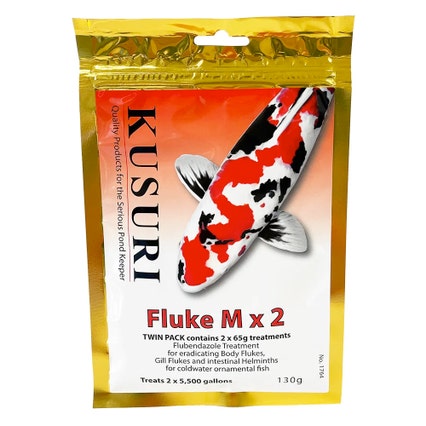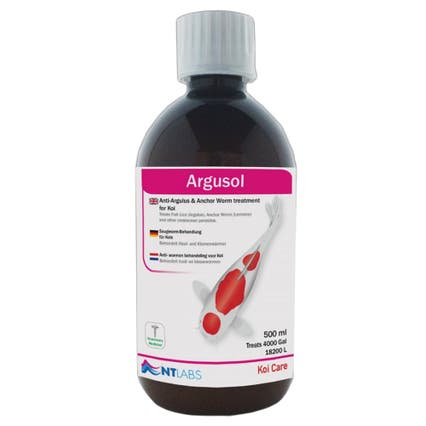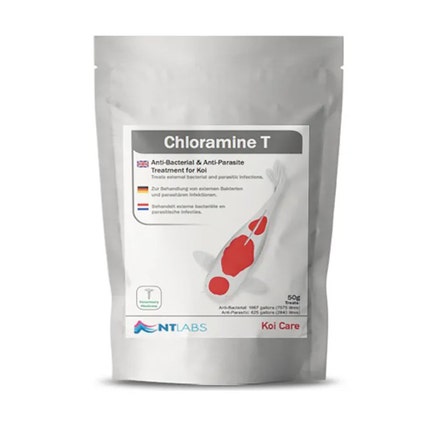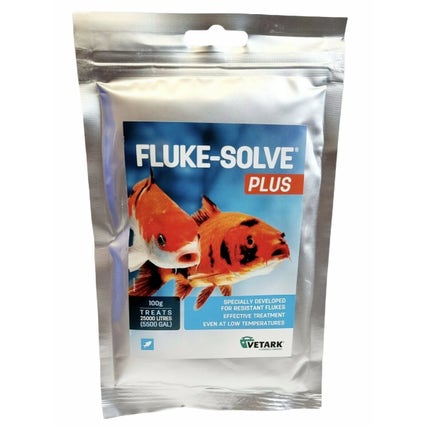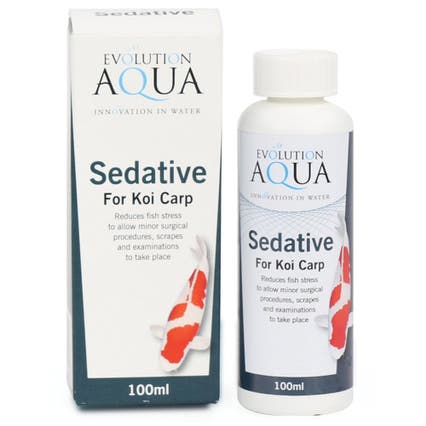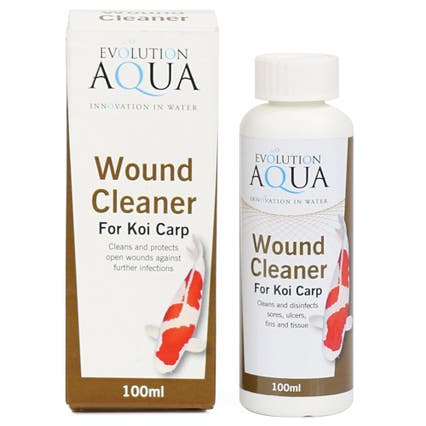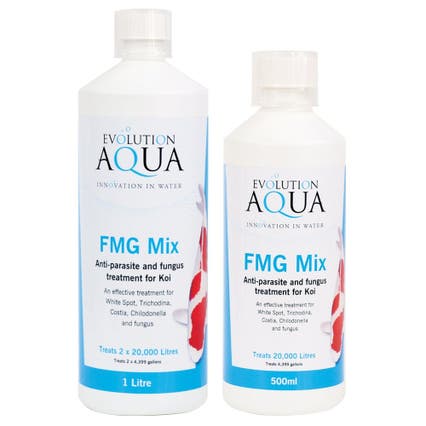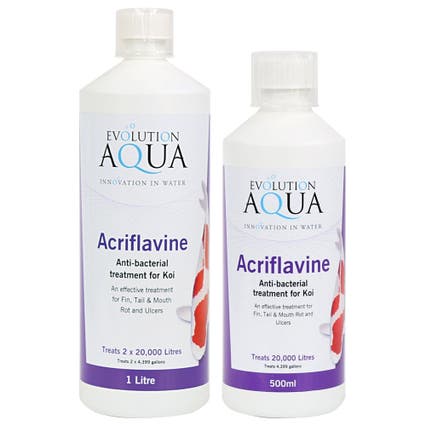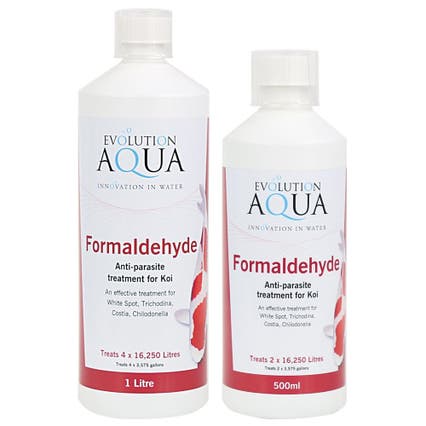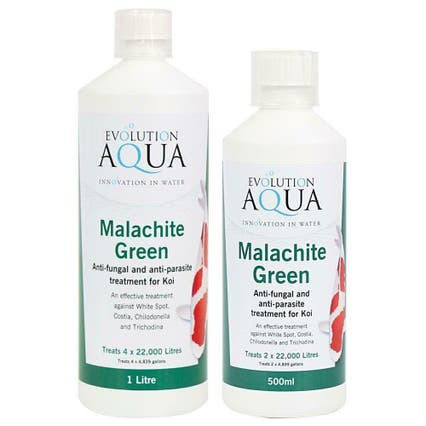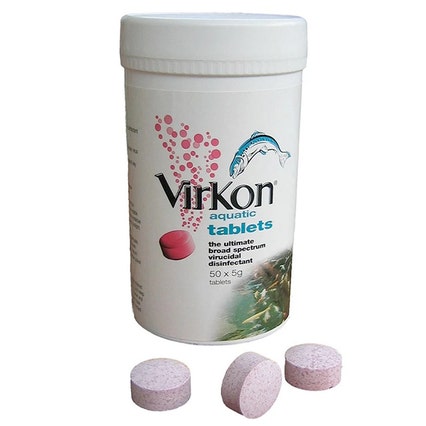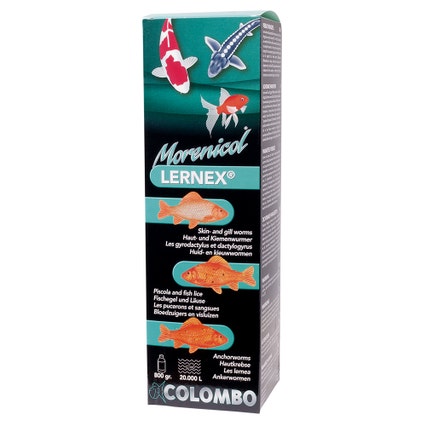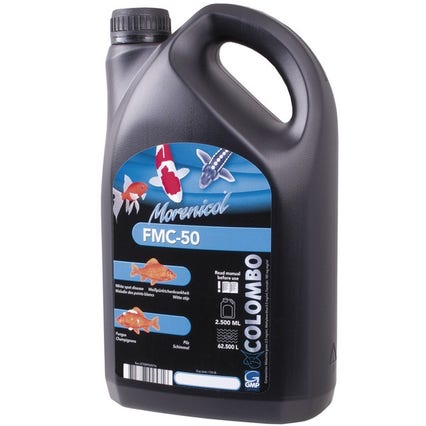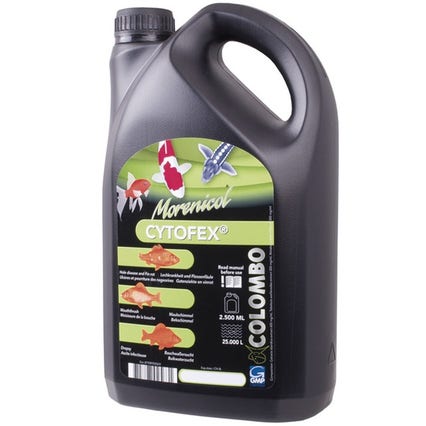Koi Medications
Koi medications is a very complex and confusing subject and there is much controversy over which, or what, is the best medication to use for a particular purpose, whether it be for the water or for the koi within the pond. In this section we will try to guide you as best we are able.
Ironically chemicals added to a pond intended to bring about a cure for health problems are very invasive to fish in the first place, as chemicals increase stress levels in fish. Generally most common pond treatments reduce dissolved oxygen in water. Some chemicals can radically reduce the level of protective mucous coating on fish. Organic die back can increase altering pH values etc. when Koi are stressed through changes in water quality an increase in Ammonia output can result. All chemicals do have a detrimental effect to the beneficial strains of bacteria we need in the pond & filter.
The level of damage done to the enclosed eco system is hard to quantify precisely for any given chemical. Anti-bacterial treatments are exactly that, for example they lower bacteria levels but there is no discrimination, all bacteria good and bad will be affected. After any chemical is added to the pond, water quality, needs to recover from this kind of disturbance as in most cases pollutant levels can increase.
After any pond wide treatment planed additional water quality monitoring is the best starting point. Re-boosting the filter and pond with nitrifying bacteria is very beneficial. Stopping feeding while medicating will at least reduce some of the pollutants that the "strained" filter system has to deal with. Let the results from your water testing be your guide to resuming normal feeding levels.
It is critical when adding any medication that the volume of your pond to be treated is known. DO NOT GUESS if you don't know find out, as adding too much chemical can be fatal conversely, too little can be ineffective. Accurate measuring of dosage rates again is just as important.
Always pre-mix the measured quantity into a large bucket of pond water and add a quarter of the mix to the pond initially and then, perhaps after 15 or 20 minutes, you can add some more - this allows the fish to become use to the medication gradually rather than causing them too much stress with a single dose. Always ensure that you have a good air supply going into your pond as adding chemicals can severally reduce the oxygen levels in your pond... try to bear in mind also that the oxygen levels at night time are always lower and therefore unless it is an emergency, do not add chemicals during the evening.
Choosing the correct chemical is probably the hardest part of treating any pond! So if you do see the odd fish 'flicking' or 'flashing' in the early morning or during the early part of the evening, this does not mean that there is anything wrong, as it could be the lower oxygen levels that are causing the fish to behave in this manner.
One more thing always test your water before adding any chemicals and if you suspect parasites then those parasites have to be identified using a good quality microscope, which is a very important part of any equipement and should certainly be placed on the shopping list as a priority if you don't already have one.

